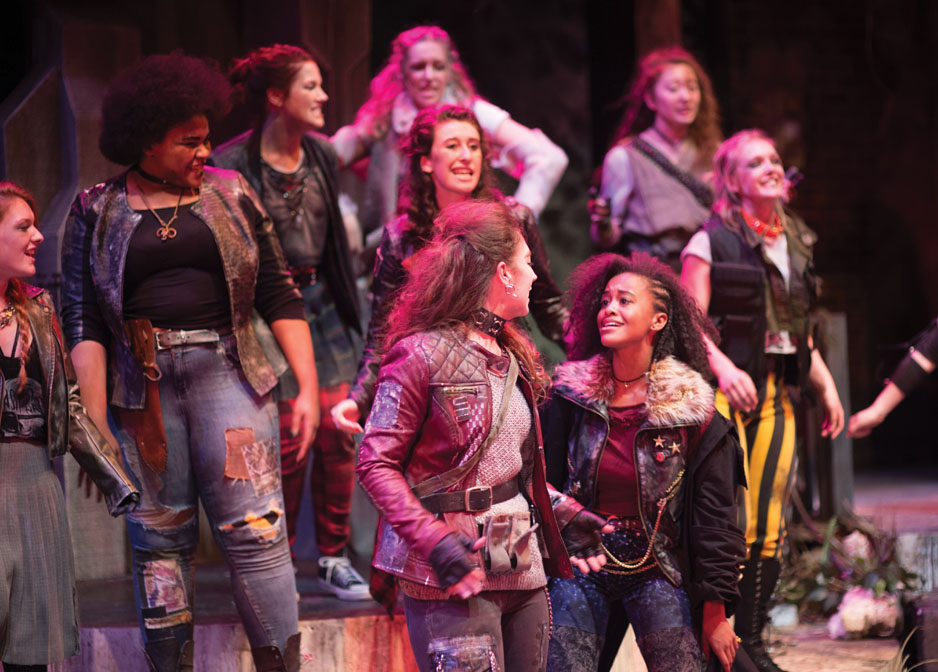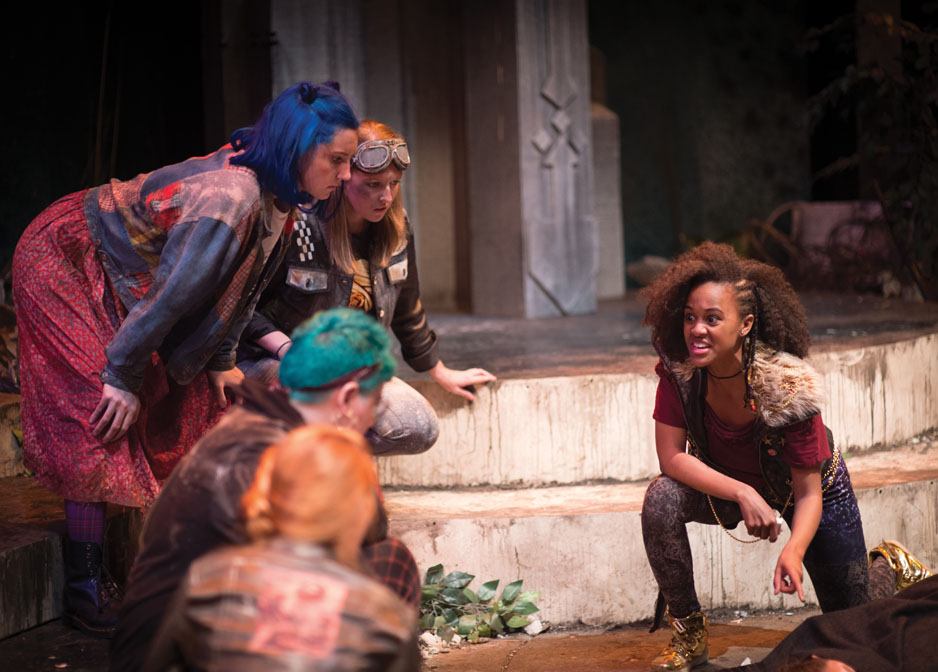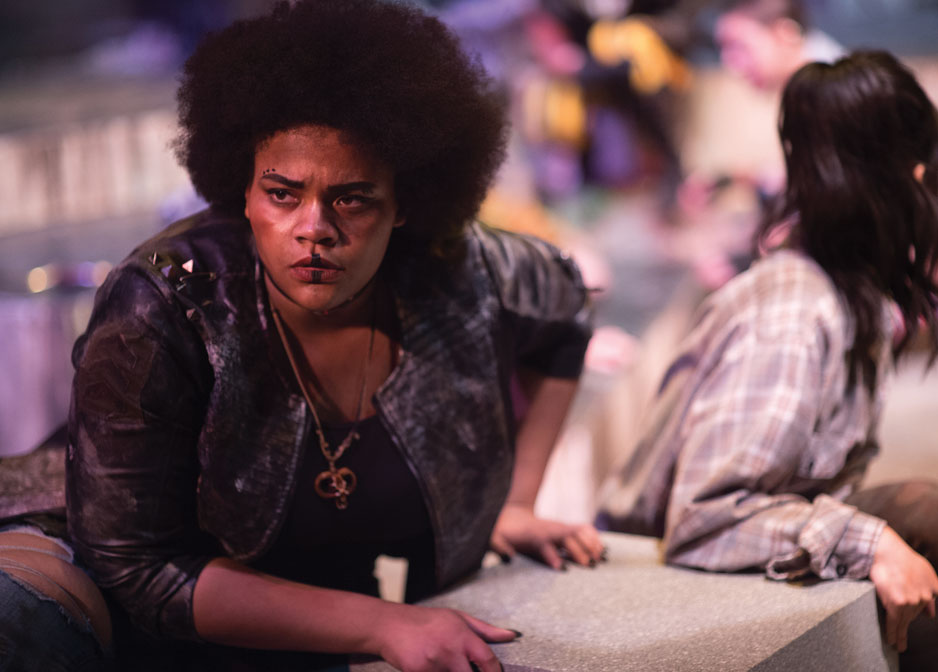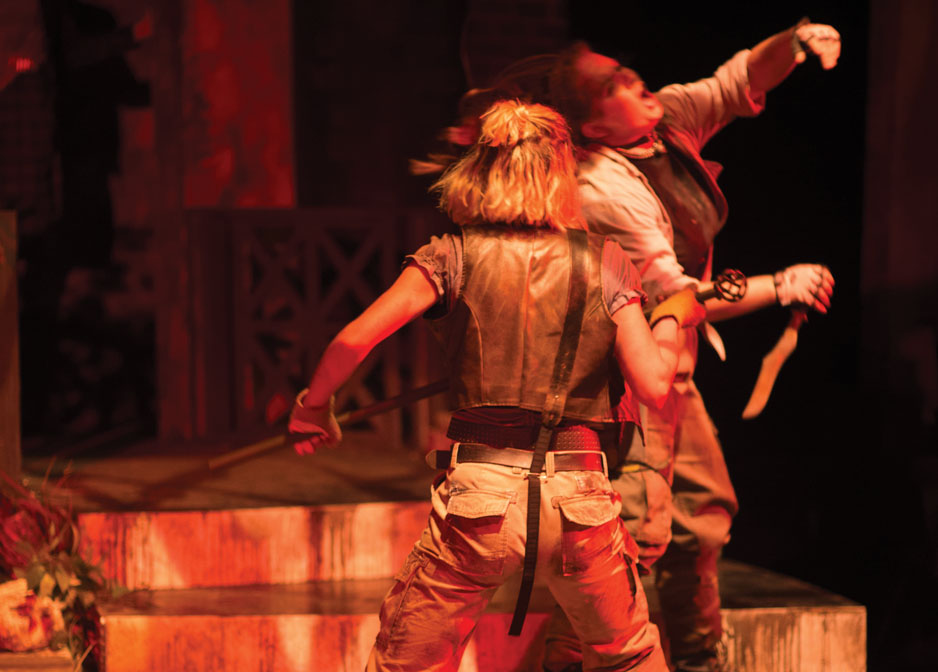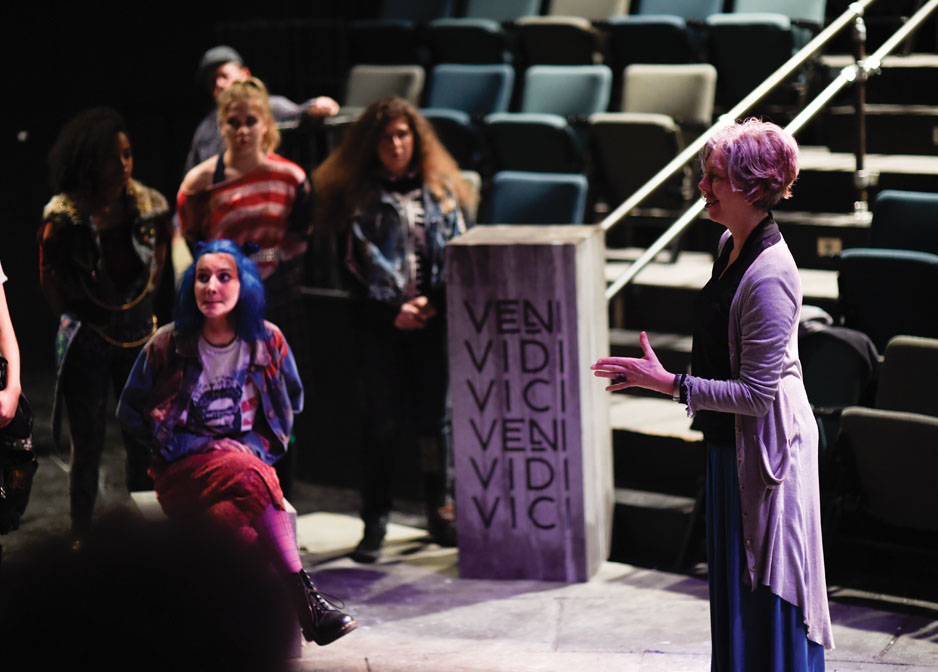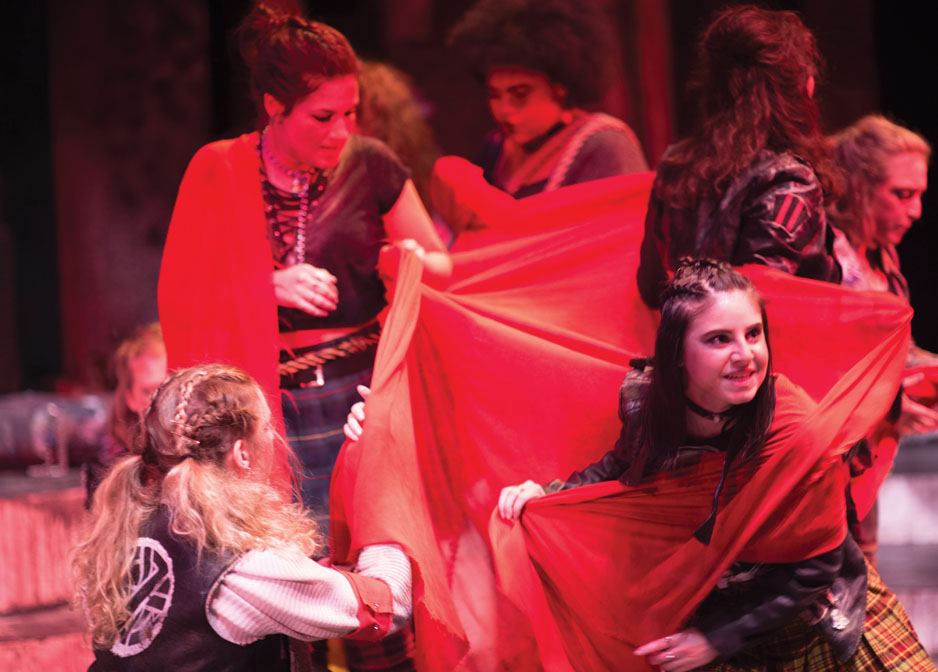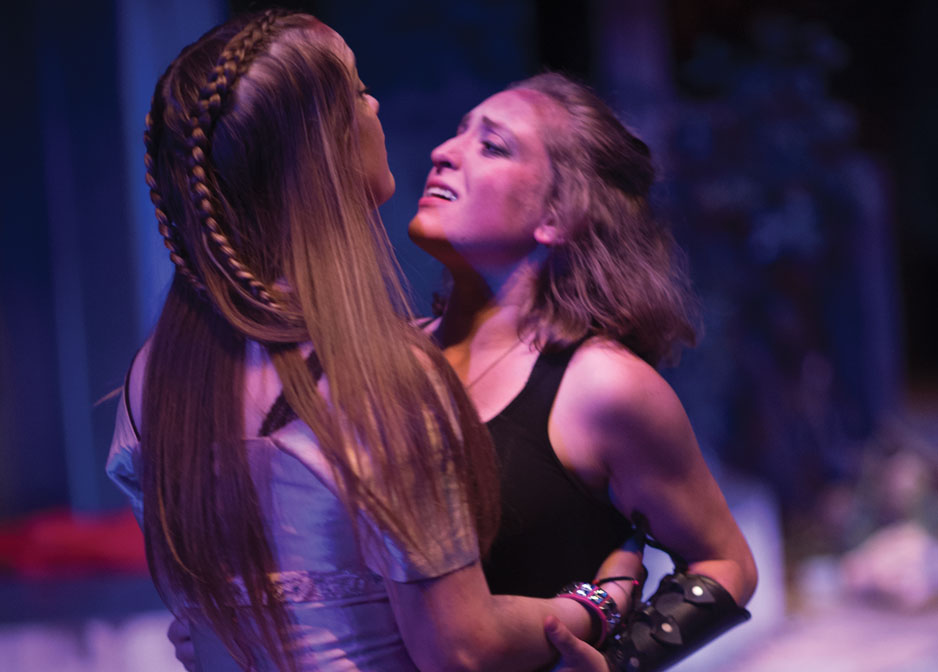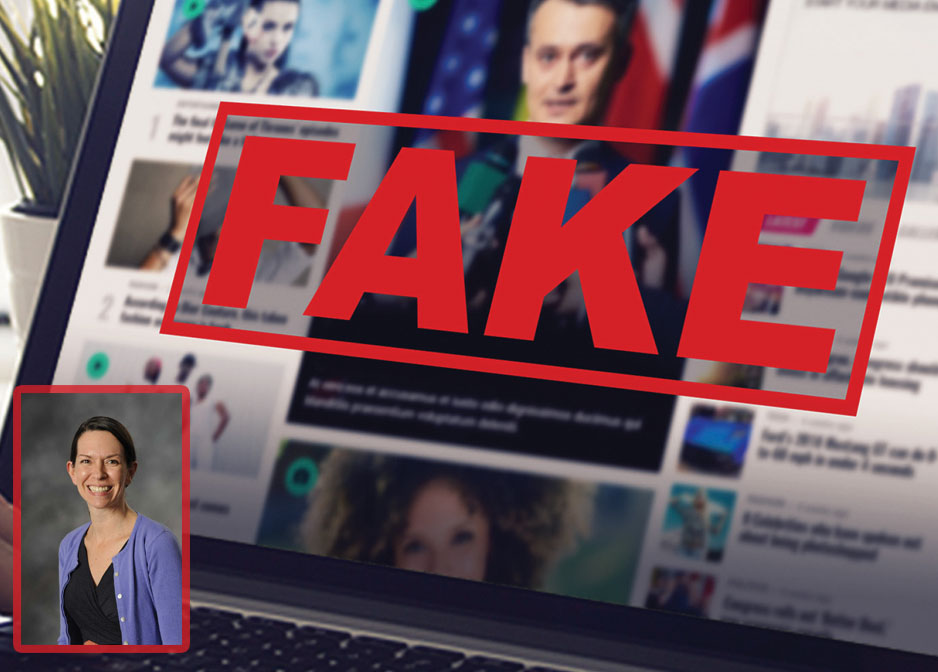Chants in Action
Riot Girl in the Forum
Consider, Question, Think
Whether it’s state-sponsored propaganda or viral memes, “fake news” is everywhere. What is it, and how can you protect yourself from it?
This question was the foundation for a public lecture series presented in March 2018 titled “Real or Fake: News and Writing in Contemporary Times, ” sponsored by the Edwards College Board of Visitors.
Wendy Weinhold, assistant professor in the Department of Communication, Media and Culture, presented a lecture titled “What is News? How to Tell Fake News from Real Journalism in an Era of Excess Information.” We sat down with Weinhold to discuss the finer points of the lecture.
T: What exactly is “fake news”?
WW: Fake news is more than untrue news. It is more than a factual error made by a professional journalist working in news media; it has political and ideological intent to deceive, mislead, misinform and confuse. Fake news is information that causes dissent – it riles people up about things that are fabricated, pitting us against each other.
T: How does social media work to spread and disseminate these ideas?
WW: News has certain formats. Fake news utilizes these formats to spread disinformation, and social media makes it harder to filter out. It’s difficult to check facts, sources and intent when you’re constantly barraged with it by your friends, neighbors and family members.
T: How can people avoid spreading or falling for fake news?
WW: Media literacy demands we take responsibility for the media we consume. People have to be actively involved in their media. Everybody now has a platform, and there is a much greater responsibility on each of us on whom we allow to inform us.
T: What are some ways to protect your newsfeeds?
WW: The first is to ask, “Is there a byline?” Good journalists tell you who they are and who they’re working for. If there is a byline, read about the person writing the article. If there isn’t a byline, look for the “about us” section. A traditional journalistic endeavor is going to tell you what their mission is, usually some form of public service. If it’s not public service, they aren’t doing journalism.
Next, check the outlet’s sources. If they aren’t using the best and brightest experts in whatever field they’re reporting on, then they aren’t doing their due diligence.
Finally, don’t trust something just because it looks like news. The consequences are severe. A functioning democracy requires access to a free and competent press.
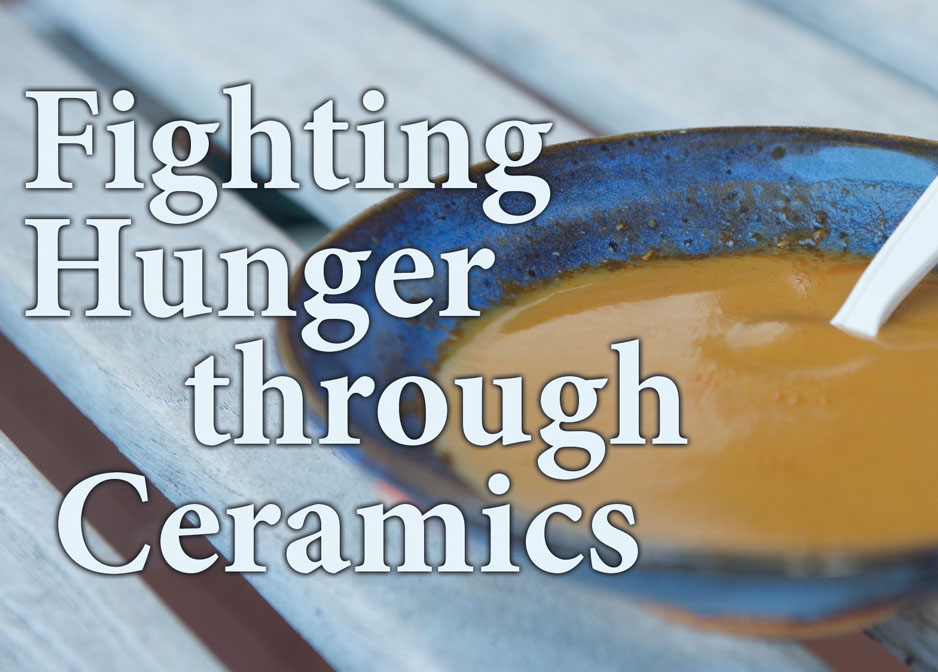
Fighting Hunger through Ceramics
More than a quarter of all college students find themselves “food insecure,” the state of being without a consistent, reliable source of affordable food. It’s an issue that plagues every campus across the nation, but within the Edwards College, the problem is being combated one bowl at a time.
For six years, CCU students and faculty in the Department of Visual Arts have hosted the annual fundraising event Empty Bowls. On a late winter afternoon, students, faculty and community members gather in the Edwards Courtyard to peruse and purchase artistic, earthenware bowls handmade and glazed by CCU students and faculty. Each purchase entitles patrons to unlimited refills of a variety of homemade soups donated by visual arts faculty, resulting in an event long on camaraderie, awareness and warmth.
The mission of the international initiative is to feed the homeless through the construction and sale of ceramic bowls. Visual arts department faculty in conjunction with Chroma, a CCU student art group focused on building bonds through artistic creativity, led this year’s affair.
Darrah Panzarella, senior art history major and president of Chroma, was excited to head up the event.
“It’s about community,” said Panzarella, “assisting both sides of the table. A lot of art faculty and students come out to help sell the bowls, while a number of people show up every year to buy a new bowl to show support.”
When it came to organizing this year’s Empty Bowls, Elizabeth Baltes, assistant professor of visual arts and event organizer, wanted to push food insecure awareness to the forefront.
“One of the goals of the Empty Bowls movement is to increase education about food insecurity in our own community,” said Baltes.
“This year we’ve donated a portion of the proceeds to CINO Pantry here on campus because a lot of people underestimate the number of food insecure students at Coastal.” 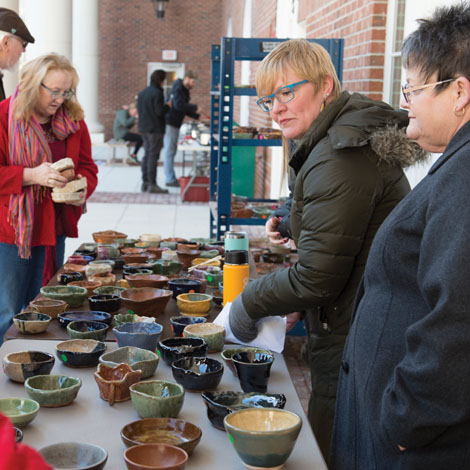
This year’s event raised nearly $1,300, marking a record for funds collected in the event’s history at CCU, with the balance of proceeds benefiting Shepherd’s Table, a nonprofit soup kitchen in Conway.
As far as her expectations of next year’s event, Baltes offers a wide smile. Her answer is more than enough to comprehend the continuing initiative.
“Bigger and better.”



.jpg)
